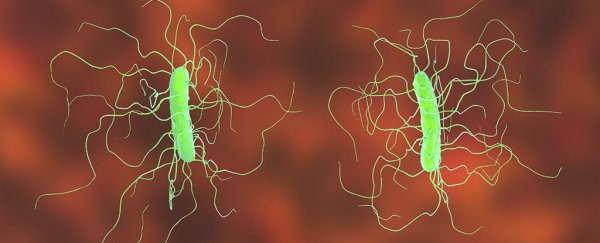A sugar additive used in several foods may have helped spread a seriously dangerous superbug around the US, according to a 2018 study.
The sugar additive in question is trehalose, found in foods such as nutrition bars and chewing gum.
The link is still being explored, but if these findings are confirmed, it's a stark warning that even apparently harmless additives have the potential to cause health issues when introduced to our food supply.
In this case, trehalose is being linked with the rise of two strains of the bacterium Clostridium difficile, capable of causing diarrhea, colitis, organ failure, and even death.
The swift rise of the antibiotic-resistant bug has become a huge problem for hospitals in recent years.
"In 2000, trehalose was approved as a food additive in the United States for a number of foods from sushi and vegetables to ice cream," said one of the researchers, Robert Britton from the Baylor College of Medicine in Texas, back in January 2018.
"About three years later the reports of outbreaks with these lineages started to increase. Other factors may also contribute, but we think that trehalose is a key trigger."
The C. difficile lineages Britton is referring to are RT027 and RT078. When the researchers analysed the genomes of these two strains, they found DNA sequences that enabled them to feed off low doses of trehalose sugar very efficiently.
In fact, these particular bacteria need about 1,000 times less trehalose to live off than other varieties of C. difficile, thanks to their genetic make-up.
To test their findings, the scientists experimented with mice given the RT027 strain. In the group given low doses of trehalose, the death rate was much higher – not because of more bacteria, the scientists found, but because the sugar enabled it to produce more poisonous toxins.
Further testing on fluids from three human intestines showed that RT027 was able to grow from small amounts of trehalose, while other bacteria strains weren't.
It's still not certain that trehalose has contributed to the rise of C. difficile, but the study results and the timing of its approval as an additive are pretty compelling. More research will now be needed to confirm the link.
According to the figures from the Centers for Disease Control and Prevention in the US, logged in 2011, C. difficile was responsible for half a million infections across the year and 29,000 deaths within the first 30 days of diagnosis. Let's hope this new research can help us work out ways to fight back against it.
"These lineages have been present in people for years without causing major outbreaks," says one of the researchers, James Collins from the Baylor College of Medicine.
"In the 1980s they were not epidemic or hypervirulent but after the year 2000 they began to predominate and cause major outbreaks."
"An important contribution of this study is the realisation that what we once considered a perfectly safe sugar for human consumption, can have unexpected consequences."
The findings have been published in Nature.
Editor's note (4 March 2022): ScienceAlert has been contacted about this article after publication by Hayashibara, makers of trehalose, who note that conclusions drawn this published article were focused primarily on animals (mice). Other journal articles published in EBioMedicine and Open Forum Infectious Diseases show that trehalose isn't associated with adverse Clostridium difficile infection outcomes in humans. The relationship between trehalose and antibiotic resistant C. diff continues to be explored.
A version of this article was first published in January 2018.
